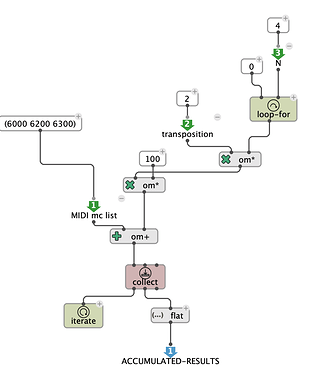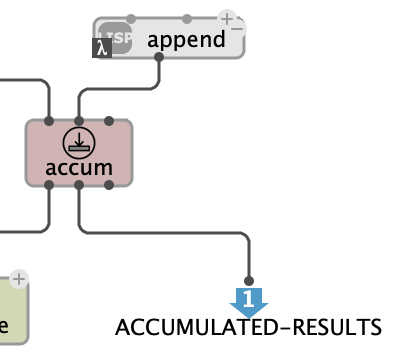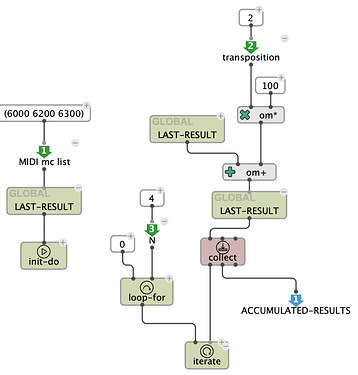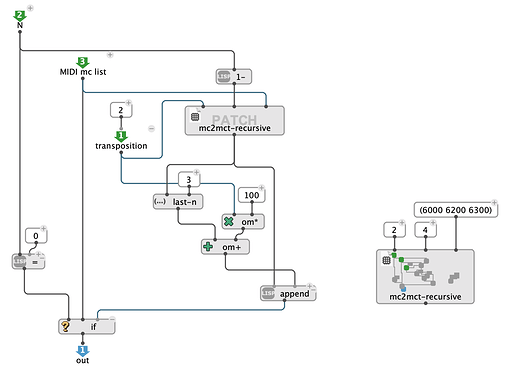(Sorry for being clueless about this but I have tried ((for days) LOL)
The attached patch simply transposes a MIDI cents list by a specified number of semitones; so (6000 6200 6300) up 2 semitones becomes (6200 6400 6500).
I’d like to do do this n number of times and append the results, let’s say twice, so that (6000 6200 6300) becomes ((6000 6200 6300) (6200 6400 6500) (6400 6600 6700)). I can’t figure out to do it (recursively, I’d imagine) and have been getting [!!] :: cycles not permitted! messages.
I’d be very grateful for help. Thanks.
Don
mc2mct.opat (4.1 KB)




 )
)